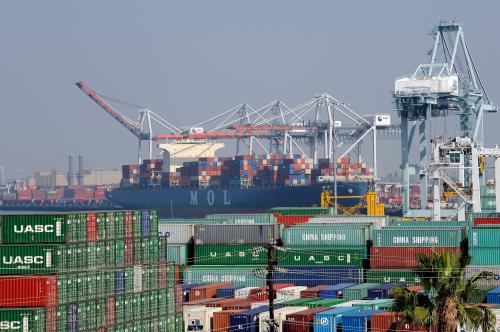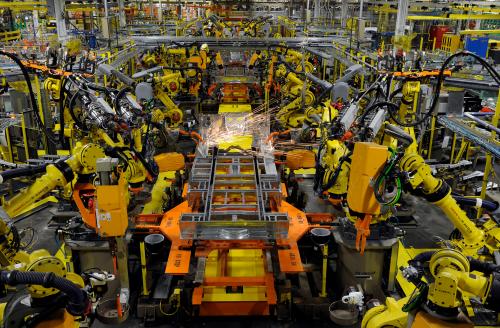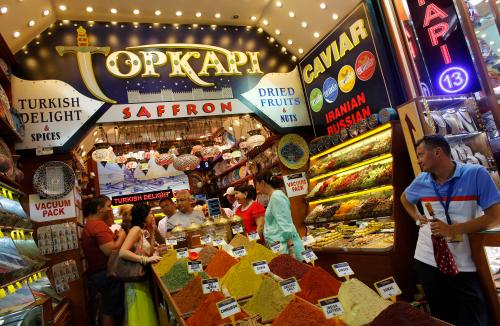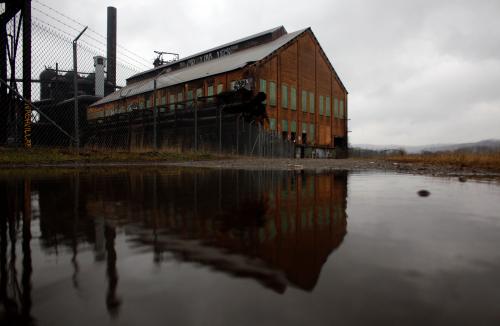For decades, we economists advocated for free trade, rightly pointing out its benefits but underplaying the importance of the adjustment costs that accompany large trade flows. By underplaying these costs, we share some responsibility for the current backlash against globalization and the rise of populism in western democracies.
According to international trade theory, the elimination of trade barriers increases specialization of production, raises productivity, and boosts economic growth. By exploiting each county’s comparative advantage, consumers can benefit from cheaper and better quality products. In 1941, economists Wolfgang Stolper and Paul Samuelson showed that specialization of production has a direct impact on wages and the returns to capital. The Stolper-Samuelson theorem states that there are winners and losers from the liberalization of international trade. Losses, according to the framework, are in the form of lower wages for workers employed in import-competing sectors. The model’s predictions rest on the assumption that there is no unemployment and that workers can move, frictionless, across sectors.
In many dimensions, the Stolper-Samuelson theorem made accurate predictions, but its underlying assumptions failed to find empirical support.
First, labor market adjustment after liberalization happens through employment, and not only wages. In other words, workers in sectors exposed to foreign competition lose their jobs and not only temporarily (in transition to expanding sectors as the theory predicts); they also suffer from long-term unemployment. Daron Acemoglu and co-authors estimate that 2-2.4 million manufacturing jobs in the United States were lost as a direct effect of China’s accession to the World Trade Organization. The unemployment effects linked to China’s competition remained even 10 years after the initial shock. These estimates are net of other simultaneous changes that affected employment in U.S. manufacturing such as technological progress.
Second, there is no such thing as frictionless flow of workers across sectors; this is particularly true for workers without a college degree. David Autor and others show that U.S. workers without a college degree in import-competing sectors moved only within the manufacturing sector but had difficulty finding a job outside of manufacturing; therefore, they were exposed to foreign competition. In addition, low-skilled workers in manufacturing experienced a substantial reduction in earnings and had a higher chance of receiving disability benefits.
Trade’s disproportionally high costs among low-skilled, low-wage workers in the U.S. cannot be offset with unemployment benefits. Long spells of unemployment are associated with anxiety, depression, and substance abuse leading to a higher mortality rate: a 1 percent increase in the unemployment rate raises opioid death rate by 3.6 percent. Not surprisingly, frustrated voters, especially those without a college degree in Wisconsin, Michigan, and Pennsylvania—three states that faced increased import competition since the early 2000s—played a decisive role in the 2016 U.S. presidential election.
Despite the disproportionate cost that trade had on U.S. manufacturing workers, the overall net welfare effect of international trade liberalization for the U.S. was positive. International trade improved productivity, encourage innovation, and spur investment. All consumers in the U.S., but particularly those with low incomes, enjoy higher purchasing power thanks to cheaper imports arriving from China and other less developed countries. At the international level, trade has contributed to the well-being of millions, from boosting labor productivity in Mexico and reducing gender disparities in Honduras to contributing to the massive reduction of global poverty since 1990, among many other benefits.
Protectionism is not the cure for trade’s shortcomings. Manufacturing firms are not coming back to the U.S.; even if they do, they will do so with a completely different technology of production, employing a small fraction of the low-skill workers compared to 40 years ago. Perhaps more important, protectionism will increase prices, from avocados made in Mexico to iPhones produced in China, reducing the purchasing power of consumers, particularly those with low incomes who tend to consume more of the cheap goods produced abroad.
In light of this recent evidence, it is clear that we (economists) should have conveyed a more nuanced recommendation regarding free trade—to be fair, some, like Paul Krugman and Dani Rodrik, did. Perhaps the pace at which globalization was implemented should have been more moderate. Perhaps we should have been more cautious and stressed the perils of trade in a realistic friction-prone labor market where unemployment plays a major role. Perhaps policymakers should have been more open about who was going to lose from trade liberalization and put solutions in place before freeing trade. But going back in time is not an option; and attempting it by closing the borders with tariffs or walls will damage the same working class that the protectionist policy is trying to help.
The Brookings Institution is committed to quality, independence, and impact.
We are supported by a diverse array of funders. In line with our values and policies, each Brookings publication represents the sole views of its author(s).






Commentary
Angry voters have a point, but protectionism is not the answer
March 20, 2017